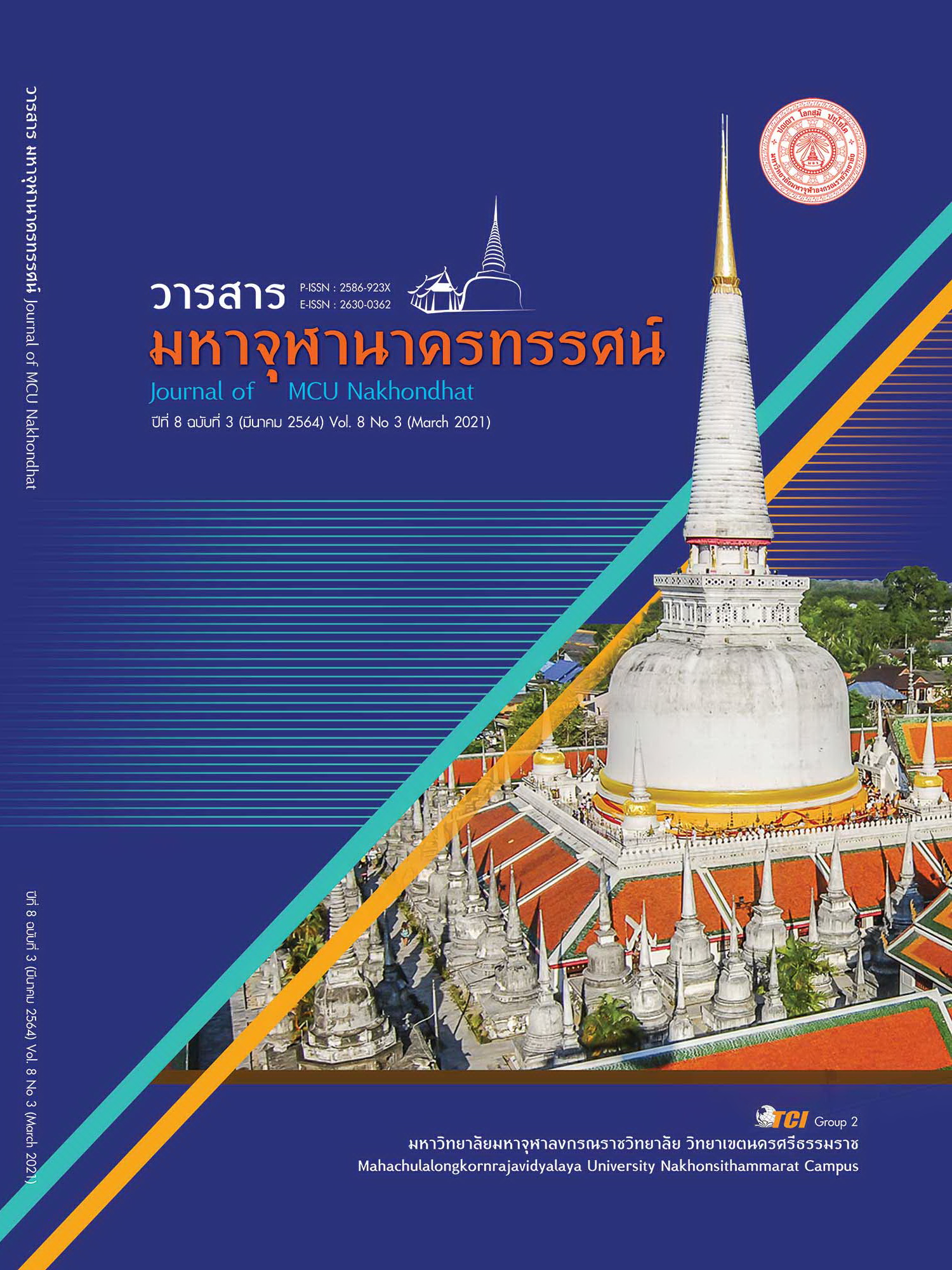COMPUTING SCIENCE LEARNING MANAGEMENT PLAN UNDER THE SECONDARY EDUCATION SERVICE AREA OFFICE 37
Main Article Content
Abstract
The objectives of this research article were to study of Computer Science learning management plan under Secondary Education Service Area Office 37. The sample were administrators and coding teachers in the Secondary Education Service Area Office 37. All samples were selected by purposive sampling. The research instrument was the questionnaire. The data were statistically analyzed by the arithmetic mean and the standard deviation. The results revealed that Computer Science learning management plan under Secondary Education Service Area Office 37 as a whole were at high level. Ranged from high to low were management the curriculum, teacher development, evaluate and measure of Computer Science and Computer Science learning management plan. Suggestions for Computer Science learning management plan under Secondary Education Service Area Office 37 on management the curriculum, Educational Service Area Office 37 should provide supervisors to continuously monitor the management of Computer Science learning. To support teachers in teaching effectively, which is the most important factor to improve students’ learning achievement and living quality, teachers should encourage learners to share their knowledge and learn together where the exchange is necessary. It will lead to the expansion of knowledge and applicable to the daily life. In term of evaluation and measurement, Computer Science teachers should be encouraged to develop a learning management plan using techniques and methods suitable for learners in the context of the educational institution. Promoting research in the classroom to improve teaching and learning. In term of teacher development, teachers should be encouraged to develop innovations in computational science learning management in various forms.
Article Details
References
ชัชรินทร์ เลิศยศบดินทร์. (2563). การพัฒนารูปแบบการจัดการเรียนรู้ทางวิทยาการคำนวณ โดยใช้กระบวนการออกแบบเชิงวิศวกรรมร่วมกับ การจำลองสถานการณ์ออนไลน์ เพื่อส่งเสริมความสามารถในการแก้ปัญหาสำหรับนักเรียนชั้นประถมศึกษาปีที่ 6. ใน วิทยานิพนธ์คณะคุรุศาสตร์อุตสาหกรรมหาบัณฑิต สาขาเทคโนโลยีการเรียนรู้และ สื่อสารมวลชน. มหาวิทยาลัยเทคโนโลยีพระจอมเกล้าธนบุรี.
นิมิตร ตาน้อยและคณะ. (2562). การพัฒนาสื่อการสอนด้านคอมพิวเตอร์ รายวิชาเทคโนโลยี (วิทยาการคำนวณ) เรื่อง การออกแบบ และการเขียนโปรแกรมเบื้องต้นโดยใช้ภาษาไพทอน กรณีศึกษาโรงเรียนในเขตพื้นที่จังหวัดเลย ระดับมัธยมศึกษาตอนต้น. เลย: มหาวิทยาลัยราชภัฏเลย.
บุญชม ศรีสะอาด. (2556). การวิจัยเบื้องต้น. (พิมพ์ครั้งที่ 9) กรุงเทพมหานคร: สุวิริยสาส์น.
ปัญกาญจน์ ทรัพย์เจริญ และคณะ. (2563). ผลการจัดการเรียนรู้ตามแนวคิดสะตีมศึกษาร่วมกับบทเรียนอีเลิร์นนิง วิชาเทคโนโลยี 1 (วิทยาการคำนวณ) เรื่อง การพัฒนาโครงงาน ระดับชั้นมัธยมศึกษาปีที่ 4. วารสารครุศาสตร์อุตสาหกรรม, 19(2), 90-99.
ภัทราวรรณ สุรรณวาปี และ อิศรา ก้านจักร. (2563). การพัฒนาสิ่งแวดล้อมทางการเรียนรู้เกมมิฟิเคชั่นเพื่อส่งเสริมการคิดแก้ปัญหาของผู้เรียน ในรายวิชาวิทยาการคำนวณ เรื่อง การแก้ปัญหาชั้นมัธยมศึกษาปีที่ 1 โรงเรียนหนองวัวซอพิทยาคม. วารสารบัณฑิตวิจัย, 11(1), 15-27.
สำนักงานเขตพื้นที่การศึกษามัธยมศึกษา เขต 37. (2563). แผนพัฒนาการศึกษาขั้นพื้นฐาน 3ปี: พ.ศ. 2563 - 2565. แพร่: กลุ่มนโยบายและแผน สำนักงานเขตพื้นที่การศึกษามัธยมศึกษา เขต 37.
สำนักงานคณะกรรมการการศึกษาขั้นพื้นฐาน. (2561). คำสั่ง สพฐ. ที่ 30/2561 เรื่อง ให้เปลี่ยนแปลงมาตรฐานการเรียนรู้และตัวชี้วัด กลุ่มสาระการเรียนรู้คณิตศาสตร์ และวิทยาศาสตร์ (ฉบับปรับปรุง พ.ศ. 2560). เรียกใช้เมื่อ 5 มิถุนายน 2563 จาก https://www.skprivate.go.th/group/detail/21
สุกัญญา ประมายะยัง. (2560). การบริหารหลักสูตรสถานศึกษาของโรงเรียนตามความคิดเห็นของครู สังกัดสำนักงานเขตพื้นที่การศึกษามัธยมศึกษา เขต 32. มหาสารคาม: มหาวิทยาลัยราชภัฏมหาสารคาม.
สุเมธ ราชประชุม. (2562). การพัฒนาแอปพลิเคชันเพื่อการเรียนรู้บนระบบปฏิบัติการแอนดรอยด์ วิชาวิทยาการคำนวณ เรื่อง แนวคิดเชิงคำนวณ สำหรับนักเรียนชั้นมัธยมศึกษาปีที่ 4 โรงเรียนห้วยกรดวิทยา จังหวัดชัยนาท. ชัยนาท: กลุ่มสาระการเรียนรู้การงานอาชีพ โรงเรียนห้วยกรดวิทยา.
หน่วยศึกษานิเทศก์. (2561). รู้จักวิทยาการคำนวณ. กรุงเทพมหานคร: สำนักงานคณะกรรมการการศึกษาขั้นพื้นฐาน.


